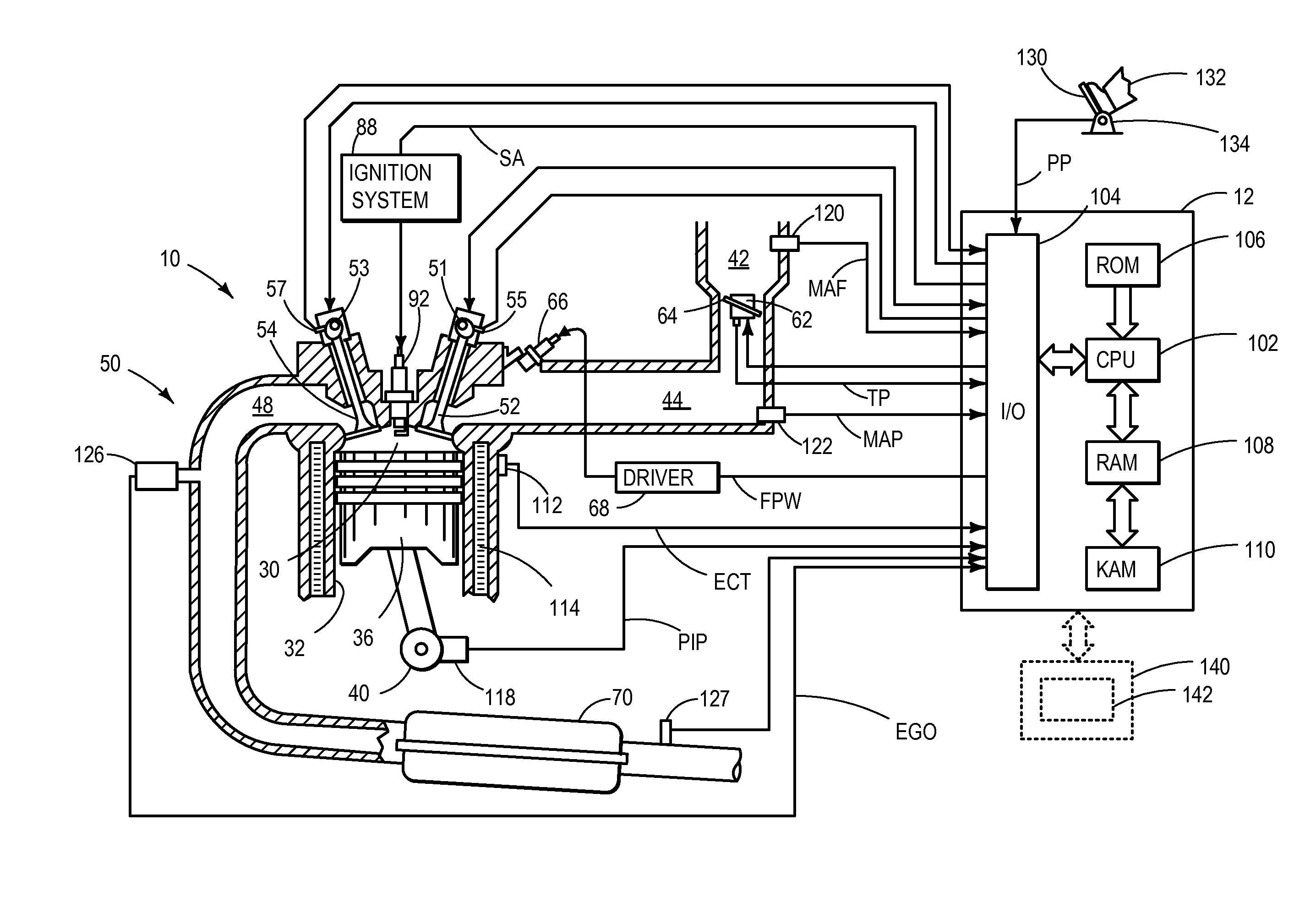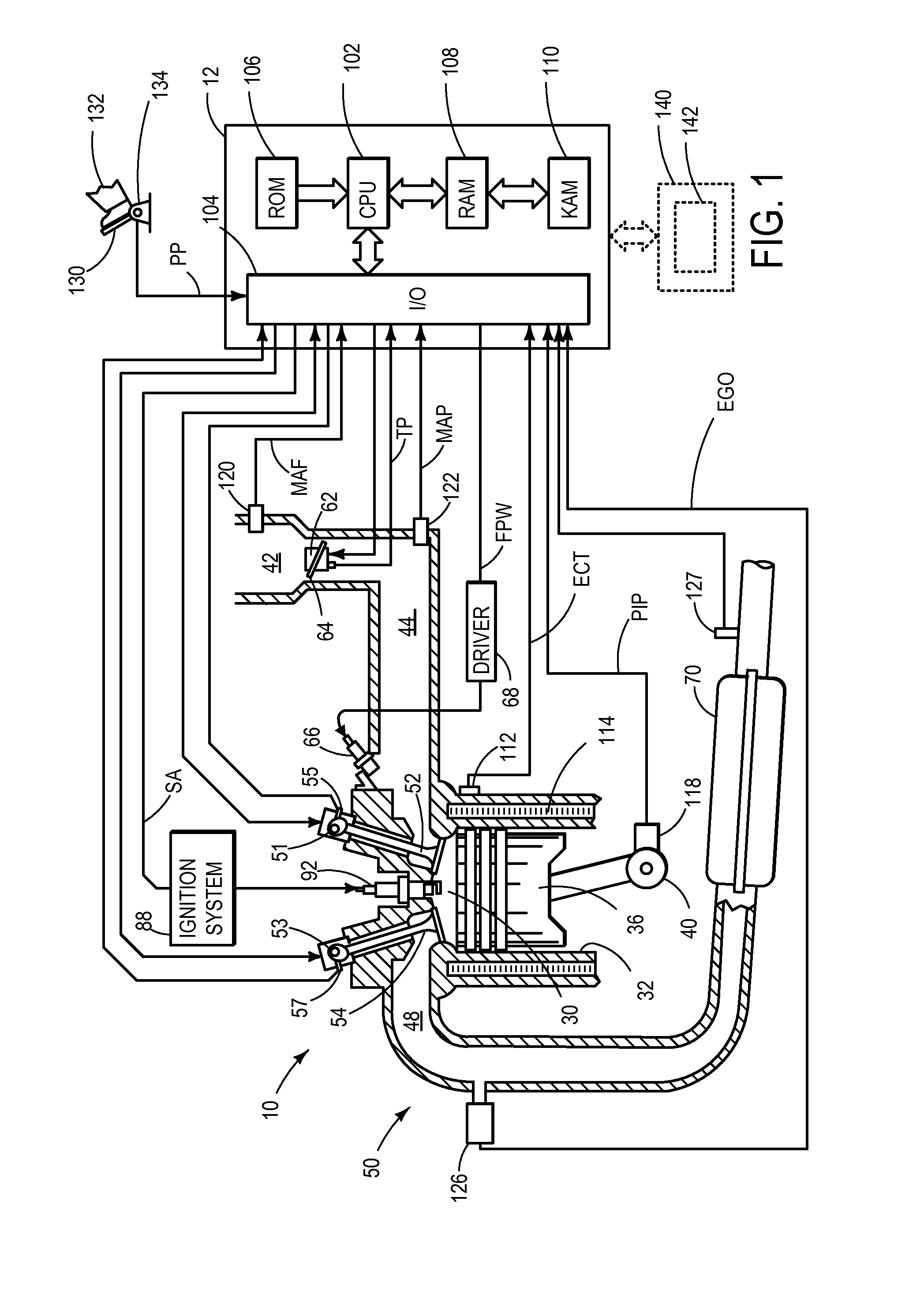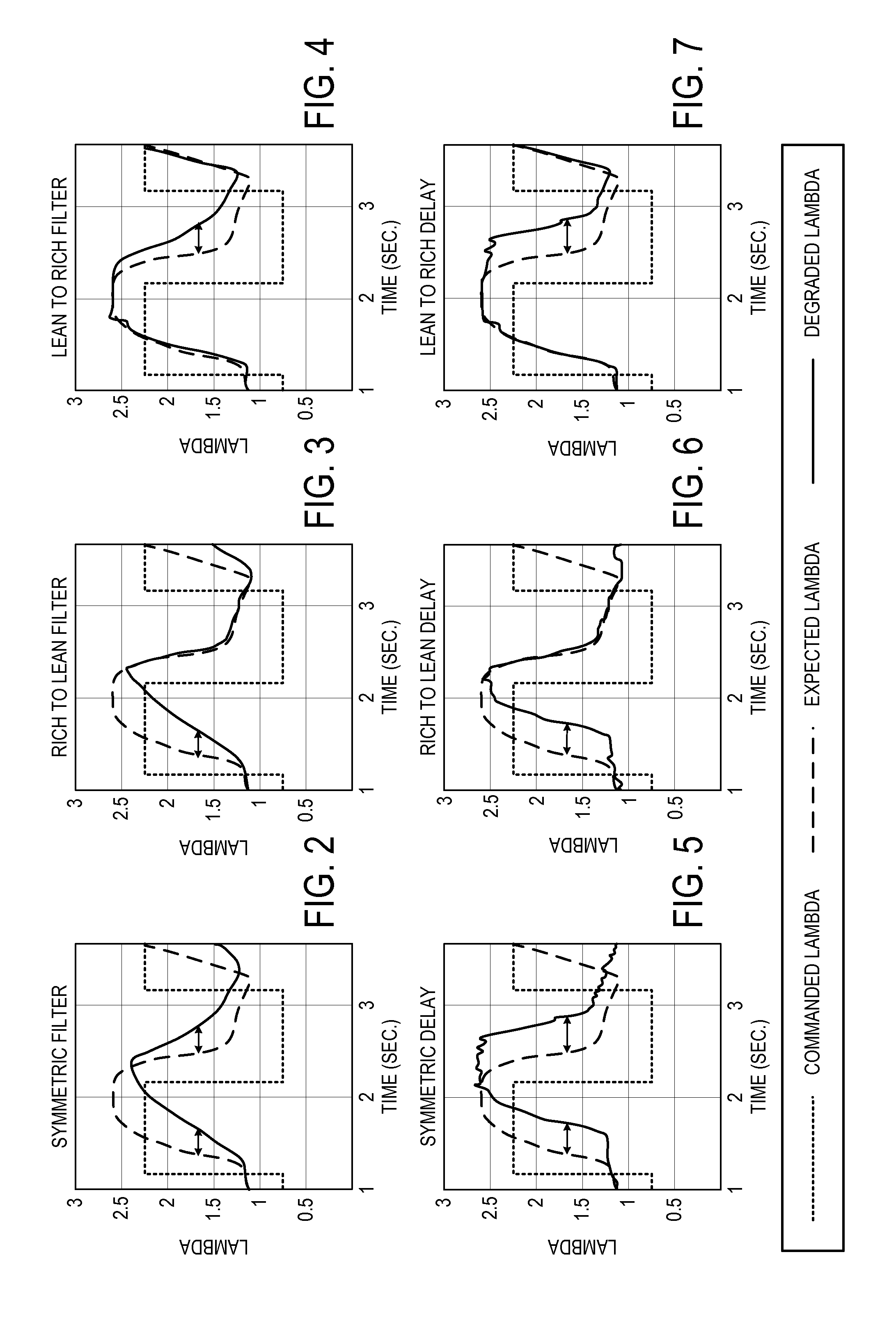Non-intrusive exhaust gas sensor monitoring
a technology of exhaust gas sensor and non-intrusive operation, which is applied in the direction of electrical control, process and machine control, instruments, etc., can solve the problems of reducing the likelihood of engine control based, reducing the accuracy of sensor degradation determination, and increasing emissions and/or reducing vehicle drivability, etc., to achieve less noise, improve the accuracy of sensor degradation determination, and improve the effect of fidelity
- Summary
- Abstract
- Description
- Claims
- Application Information
AI Technical Summary
Benefits of technology
Problems solved by technology
Method used
Image
Examples
Embodiment Construction
[0027]The following description relates to systems and methods for determining degradation of an exhaust gas sensor. More particularly, the systems and methods described below may be implemented to determine an upstream exhaust gas sensor degradation based on comparisons of an upstream sensor response with a downstream sensor response during commanded air / fuel ratio changes, e.g., entry into or exit out of deceleration fuel shut-off (DFSO). For example, if the downstream sensor responds before the upstream sensor then the upstream sensor may be degraded. Further, the systems and methods described below may be implemented to determine exhaust gas sensor degradation based on recognition of any one of six discrete types of behavior associated with exhaust gas sensor degradation. The recognition of the degradation behavior may be performed during entry into or exit out of DFSO to non-intrusively monitor exhaust gas sensor response during rich-to-lean and lean-to-rich transitions. Furthe...
PUM
 Login to View More
Login to View More Abstract
Description
Claims
Application Information
 Login to View More
Login to View More - R&D
- Intellectual Property
- Life Sciences
- Materials
- Tech Scout
- Unparalleled Data Quality
- Higher Quality Content
- 60% Fewer Hallucinations
Browse by: Latest US Patents, China's latest patents, Technical Efficacy Thesaurus, Application Domain, Technology Topic, Popular Technical Reports.
© 2025 PatSnap. All rights reserved.Legal|Privacy policy|Modern Slavery Act Transparency Statement|Sitemap|About US| Contact US: help@patsnap.com



